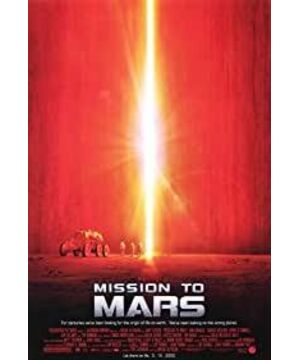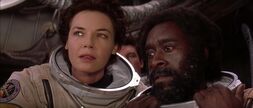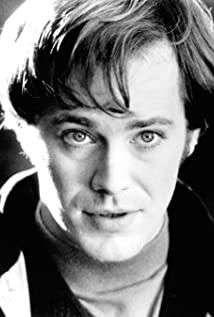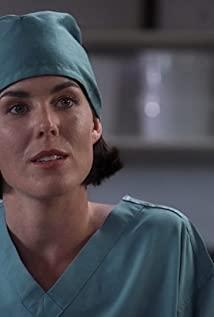There are many movies that will take many years to rewatch to discover their classics and greatness. Brian de Palma’s "Mission to Mars" is a typical example. The film premiered in the United States on March 10, 2000, and suffered bad reviews from the media, and the box office was not satisfactory. The sci-fi masterpiece with an investment of $100 million that year ended up with a North American box office of just over 60 million and a global box office of only 120 million. Brian de Palma has since lost the opportunity to direct a major Hollywood production. However, he can still find comfort in France on the other side of the ocean. The film was selected as the non-competitive unit of the Cannes Film Festival that year, and it also became the ten best film of the year in the "Cinema Manual" that year .
In fact, the audience has always had an inexplicable curiosity about Mars . There have been many Martian-themed movies before, but it was not until the beginning of the millennium that Hollywood produced this sci-fi blockbuster. Even today, this is definitely an ambitious work . The film brought in De Palma, who was very popular at the time. He had previously won the box office with "Mission Impossible" and was well-known around the world. In terms of actors, the actor Gary Sinis of "Forrest Gump" and "Apollo 13", Tim Robbins of "Shawshank's Redemption" and black actor Don Chandel were invited to help out. It must be mentioned that this is the first commercial film in the history of film that is guided by experts from the National Aeronautics and Space Administration (NASA).
Although this is produced by a standardized studio, it does not restrict De Palma's author style and whimsy . As always, he tried boldly in photography and mirroring. The opening of the film was exactly the same as "Snake Eye". He used a five or six-minute long lens to explain all the characters and their relationships, and then the plot in the space station and the spacecraft was even more dramatic. A good opportunity for him to show off his skills is like a camera in a weightless state, shooting a 360-degree non-stop rotating vertigo picture, combined with the long shot of the character strolling leisurely, perfectly showing the layout of the space capsule, and a suggestive A full three-person dance plot. Although a section of the space capsule is suspected of plagiarizing "2001: A Space Odyssey", the obvious form of tribute is de Palma's long-loved technique. As early as the 1980s, it paid tribute to Hitchcock's "Razor's Edge" and Antonioni's. Traces of his parody of classic works can be seen everywhere in works such as "The Fierce Line" .
In addition to having fun in photographic techniques, de Palma also boldly carried out genre experiments , incorporating a large number of suspense and thriller plots, making the film different from the current "hard science fiction" blockbusters, and constantly glowing with the nostalgic colors of the 1980s , and this type of experiment The success lies in the sound effects and soundtrack. The most obvious is the plot where four astronauts were killed while shooting a bizarre and spectacular Martian storm. The strange sound effects only added to the tension. The other is a scene where several astronauts are forced to flee the spacecraft and escape in space. The sudden sound effect creates a lot of shock, as if watching a Hitchcock movie.
Tim Robbins chose to take off his space helmet at a critical moment to save his wife and crew who were floating in space, which is quite comparable to that of George Clooney and Sandra in Alfonso Cuarón's "Gravity" · Bullock's drama appeared 13 years ago. The film score master Morricone presented an extraordinary soundtrack for this work. The orchestral music combined with the deep and charming starry sky shows a magnificent and magnificent momentum. And once a weird variation appears, it implies an unexpected turn in the plot or a horror scene. This traditional old-school soundtrack arrangement seems to be rare in today's science fiction movies.
At that time, the most criticized scene seemed to be the last scene. When everyone arrived inside the Mars spacecraft, the insight into the origin of life on the earth caused many audiences to have a lot of brains, and some believed that the Martians' behavior was very unreasonable. But in fact, this concept of explaining the origin of humans is similar to Kubrick’s classic 2001 A Space Odyssey, and De Palma’s expression is easier to understand and more in line with his past. The "tribute" style. This explanation of human origin even inspired Ridley Scott's 2012 "Prometheus", and even the image of the human face spacecraft contributed a lot of creativity.
After revisiting this film 20 years later, we found that this is not an imitation of the East at all, at best it can only be said to be a parody of the master's classic by de Palma. Unexpectedly, this is definitely the forerunner of countless science fiction classics after inspiration : "Gravity", "Prometheus", and "The Martian" with almost the same plot! The biggest touch to me in the film is probably the human being’s curiosity and exploration of the unknown . The plot does not hesitate to use multiple layers of foreshadowing. The male protagonist played by Gary Sinis received spiritual encouragement in the video of his wife’s death and took the initiative to follow the Martian spacecraft in the last scene. At the moment of flying into the unknown space, the powerful infectious power and Morricone's soundtrack made me cry. Today's science fiction films seem to be hard to see this grand emotion of sacrificing exploration . They often only indulge the audience in exaggerated visual effects, leaving little room for imagination and rich prospects for the future of mankind.
View more about Mission to Mars reviews











